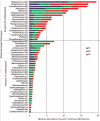Pyrosequencing as a tool for better understanding of human microbiomes
- PMID: 22279602
- PMCID: PMC3266102
- DOI: 10.3402/jom.v4i0.10743
Pyrosequencing as a tool for better understanding of human microbiomes
Abstract
Next-generation sequencing technologies have revolutionized the analysis of microbial communities in diverse environments, including the human body. This article reviews several aspects of one of these technologies, the pyrosequencing technique, including its principles, applications, and significant contribution to the study of the human microbiome, with especial emphasis on the oral microbiome. The results brought about by pyrosequencing studies have significantly contributed to refining and augmenting the knowledge of the community membership and structure in and on the human body in healthy and diseased conditions. Because most oral infectious diseases are currently regarded as biofilm-related polymicrobial infections, high-throughput sequencing technologies have the potential to disclose specific patterns related to health or disease. Further advances in technology hold the perspective to have important implications in terms of accurate diagnosis and more effective preventive and therapeutic measures for common oral diseases.
Keywords: human microbiome; next-generation DNA sequencing; oral microbiome; pyrosequencing.
Figures



References
-
- Munson MA, Pitt-Ford T, Chong B, Weightman A, Wade WG. Molecular and cultural analysis of the microflora associated with endodontic infections. J Dent Res. 2002;81:761–6. - PubMed
LinkOut - more resources
Full Text Sources
Other Literature Sources
